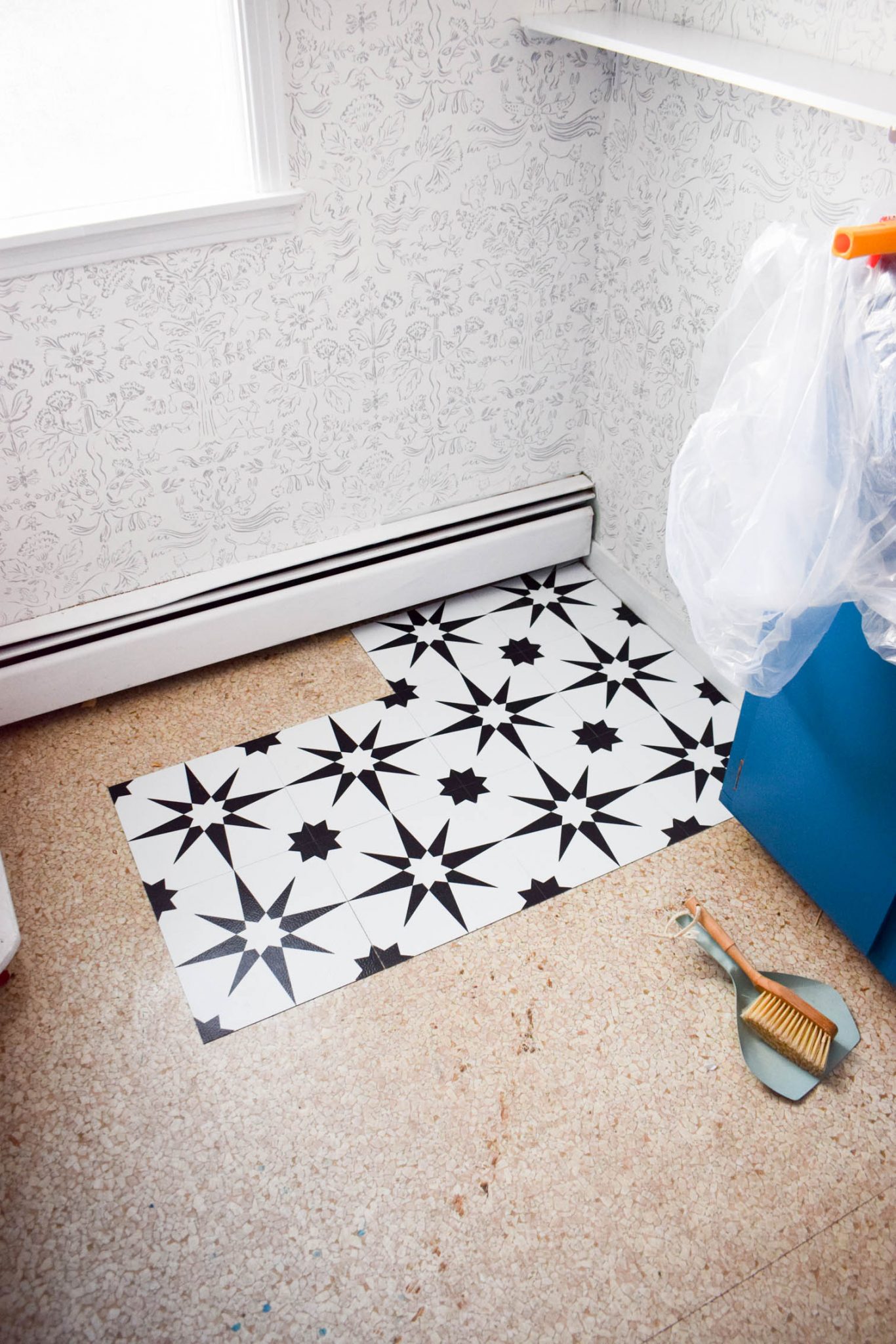Have you ever been tempted by the ease and affordability of peel and stick floor tiles? They seem like a dream come true – no grout, no mess, and quick installation. But what about when the time comes to renovate again? Can you remove them without damaging your existing flooring?

Image: www.pinterest.com
The short answer is, sometimes. Whether you’re planning a future remodel or simply want to know if you’re stuck with them, let’s delve deeper into this practical and often-asked question. This comprehensive guide will explore the world of peel and stick floor tiles, unraveling their removal mysteries and leaving you with the knowledge to confidently make a decision for your home.
Understanding Peel and Stick Floor Tiles
Peel and stick floor tiles are gaining popularity, thanks to their ease of use and impressive visual impact. Essentially, they consist of a decorative layer attached to a self-adhesive backing. These tiles are typically made from vinyl, but some options might be crafted from PVC, ceramic, or even wood-look materials.
Their popularity stems from their benefits:
- Easy Installation: They often require no special tools or expertise, making them a DIY-friendly choice.
- Cost-Effective: Compared to traditional flooring, peel and stick tiles offer a more affordable alternative.
- Variety: A wide range of designs, textures, and colors allows for a personalized look.
- Removable (Sometimes): This is where the catch lies. While many manufacturers claim “removability,” the reality is often more complex than it seems.
Can You Remove Them? The Factors at Play
The answer to the big question, “Can peel and stick floor tiles be removed?” depends heavily on a few key factors:
1. Type of Tile and Adhesive
Not all peel and stick tiles are created equal. The adhesive used, the thickness of the tile, and the materials themselves play a crucial role in their removal process.
- Vinyl Tiles: Vinyl, with its flexibility, is generally easier to remove than rigid tiles.
- Thicker Tiles: Thicker tiles may have more adhesive, making them more difficult to remove.
- Strong Adhesives: The type of adhesive used is a critical factor. Some adhesives are designed for permanent bonding, making removal nearly impossible.

Image: www.pmqfortwo.com
2. Application Surface
The material you’ve adhered the tiles to can influence their removal. Ideally, the surface should be smooth and non-porous.
- Smooth Surfaces: Surfaces like ceramic, glass, or properly prepared wood are generally easier to remove tiles from. The adhesive will bond less strongly.
- Porous Surfaces: Porous surfaces like concrete or rough wood can lead to the adhesive sinking into the surface, making removal more challenging. It’s important to note that peel and stick tiles are not designed for use on uneven or rough surfaces.
3. Age of Installation
Just like any adhesive, the longer the tiles are in place, the more tenacious their bond becomes. The adhesive can cure and solidify over time, making removal increasingly difficult.
How to Remove Peel and Stick Floor Tiles
If you decide to embark on the removal journey, here’s a breakdown of the process:
1. Preparation
- Protect Yourself: Wear gloves and safety glasses to protect your hands and eyes from any potential adhesive residue.
- Clear the Area: Remove furniture and any objects that might impede your work.
- Start Small: It’s always best to test a small, inconspicuous area first, if possible, to gauge the adhesive strength and effectiveness of your removal method.
2. Removal Techniques
Experiment with the following methods. Remember, patience and a gentle approach are key:
- Heat: Using a hairdryer or heat gun can soften the adhesive, allowing the tile to peel off more easily. Apply the heat directly to the tile, keeping a safe distance to avoid scorching or melting the material.
- Scraper: A plastic scraper or putty knife can help to slowly pry the tiles up. Avoid using metal tools, as they can scratch the underlying surface.
- Adhesive Remover: Special adhesive removers can be found at hardware stores. Apply a small amount to the tile and allow it to sit for a few minutes, then try to peel off the tile gently. Remember to follow the manufacturer’s instructions and test the adhesive remover in an inconspicuous area first.
3. Cleaning Up
Once the tiles are removed, there will likely be adhesive residue left behind. Carefully remove as much of the residue as possible menggunakan a scraper or putty knife. Then, use a cleaning agent designed for removing adhesive residue to clean the remaining area. Many cleaning products are specifically formulated for this purpose and can be found at hardware stores.
Tips for Avoiding Removal Headaches
To minimize future removal hassles, consider the following:
- Choose “Removable” Tiles: Opt for tiles specifically marketed as removable, as they will use less aggressive adhesives.
- Prepare Your Surface: Properly prepare your flooring surface. Clean it thoroughly and ensure it is smooth and free of debris or imperfections.
- Consider a Temporary Solution: For short-term needs, think about alternative solutions like removable vinyl flooring planks, which offer easy installation and removal without the permanent commitment of peel and stick tiles.
Can Peel And Stick Floor Tiles Be Removed
Final Thoughts
Removing peel and stick floor tiles can be a tricky task, and success is not guaranteed. While some tiles are indeed removable, the actual process can be time-consuming, labor-intensive, and may even result in damage to the underlying surface. Thorough research and careful consideration of the factors discussed are crucial before you commit to this type of flooring.
Always read the manufacturer’s instructions carefully before installing any peel-and-stick tiles, and remember to test a small area for removal before attempting to remove the entire floor. Plan ahead, and weigh the pros and cons carefully before making your decision. Knowledge is power, and with the right approach, you can make informed choices for your home!





